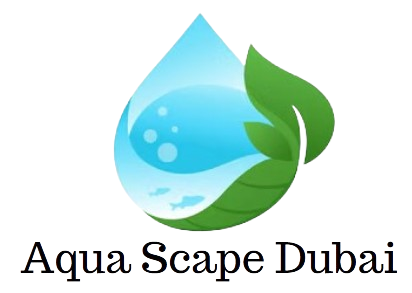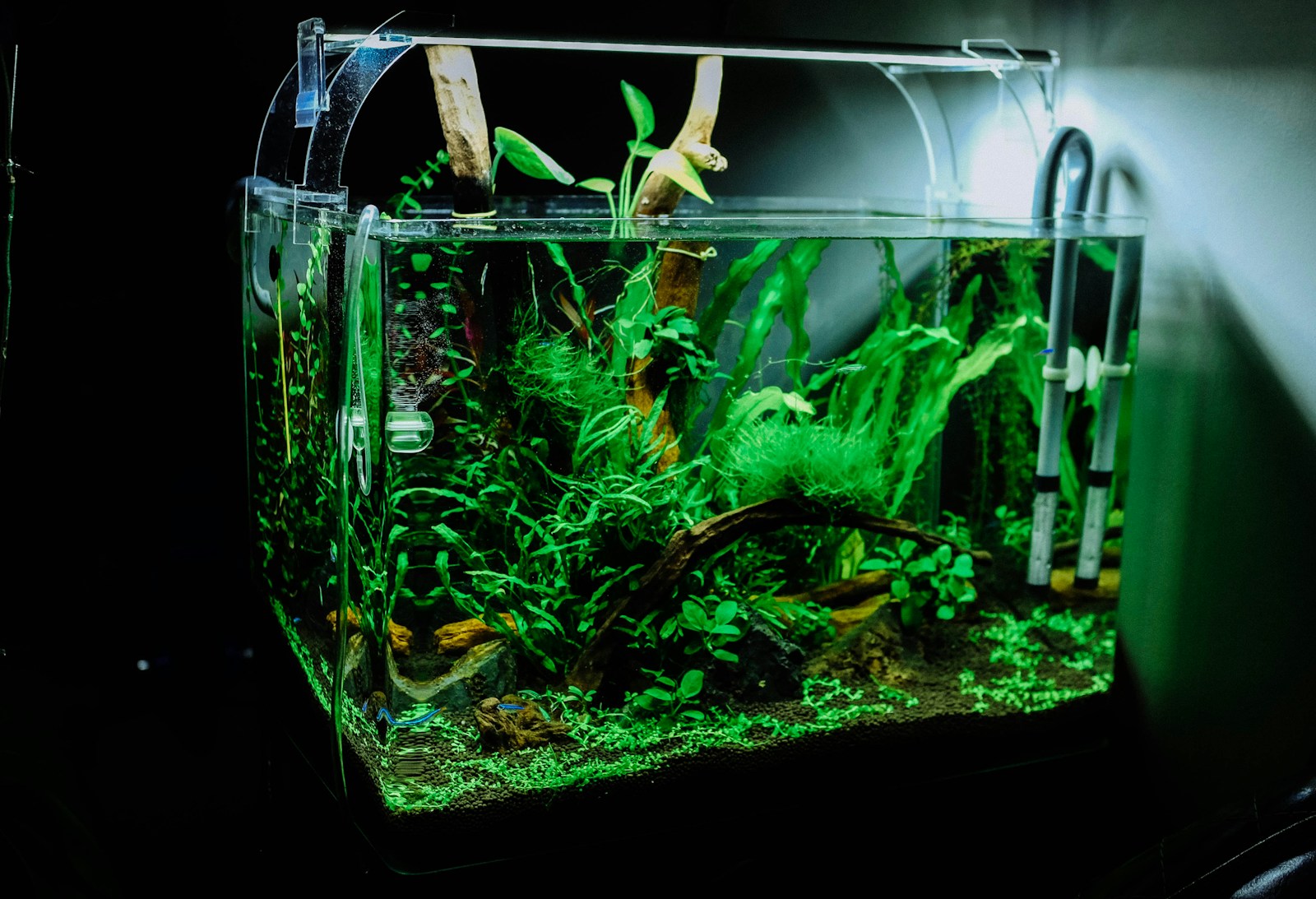Iwagumi vs. Dutch Styles in Aquascaping
Aquascaping is the art of creating beautiful underwater landscapes in aquariums. It involves arranging plants, rocks, and other elements to create a visually appealing and harmonious environment for fish and other aquatic life. Two popular styles of aquascaping are the Iwagumi style and the Dutch style. In this blog post, we will explore the characteristics and differences between these two styles.
The Iwagumi style originated in Japan and is known for its simplicity and minimalism. It focuses on creating a sense of balance and tranquility through the careful placement of rocks, usually three or five, known as the “rule of thirds.” The rocks are arranged in a way that creates a focal point, often referred to as the “main stone” or “seki,” which serves as the centerpiece of the aquascape. The Iwagumi style typically uses a limited number of plant species, with an emphasis on low-growing carpet plants such as Hemianthus callitrichoides (dwarf baby tears) or Glossostigma elatinoides.
In contrast, the Dutch style originated in the Netherlands and is characterized by its vibrant and colorful appearance. It is a more complex style that focuses on creating a lush and densely planted aquascape. The Dutch style often incorporates a wide variety of plant species, including stem plants, rosette plants, and carpeting plants. The plants are arranged in a way that creates a sense of depth and perspective, with taller plants placed towards the back and shorter plants towards the front. The Dutch style also utilizes techniques such as pruning and trimming to maintain the desired shape and form of the plants.
While both the Iwagumi and Dutch styles aim to create visually appealing aquascapes, they differ in terms of their overall aesthetic and approach. The Iwagumi style focuses on simplicity and minimalism, with an emphasis on creating a sense of balance and harmony through the careful placement of rocks and limited plant species. On the other hand, the Dutch style is more vibrant and complex, with a greater variety of plant species and a focus on creating a lush and densely planted aquascape.
When choosing between the Iwagumi and Dutch styles, it is important to consider your personal preferences and the specific needs of your aquarium. If you prefer a more serene and minimalist look, the Iwagumi style may be the right choice for you. However, if you enjoy the challenge of creating a vibrant and lush aquascape with a wide variety of plant species, the Dutch style may be more suitable. Ultimately, the choice between these two styles comes down to personal taste and the desired aesthetic for your aquarium.
The Iwagumi style is not just about arranging rocks and plants in a specific way; it is a philosophy that extends beyond the physical elements of the aquascape. It is about capturing the essence of nature and creating a sense of tranquility and harmony within the aquarium.
To achieve this, aquascapers often pay close attention to the placement of each rock, ensuring that it not only looks aesthetically pleasing but also creates a natural flow within the layout. The rocks are carefully selected based on their shape, color, and texture, with the goal of mimicking the rugged beauty of mountains and the smoothness of riverbeds.
In addition to the rocks, the choice of plants is crucial in an Iwagumi aquascape. The carpeting plant, Hemianthus callitrichoides, is favored for its ability to create a dense and vibrant green carpet that contrasts beautifully with the rocks. Other plants, such as Eleocharis parvula or Glossostigma elatinoides, may also be used to add variety and depth to the layout.
When it comes to maintaining an Iwagumi aquascape, attention to detail is key. Regular trimming of the carpeting plants is necessary to maintain their compact and neat appearance. Aquascapers also need to be mindful of algae growth, as the clean and minimalist aesthetic of the Iwagumi style can be easily disrupted by the presence of unsightly algae.
While the Iwagumi style may appear simple on the surface, it requires a deep understanding of design principles and a keen eye for detail. Aquascapers who specialize in this style often spend hours meticulously arranging and rearranging the rocks and plants until they achieve the desired effect.
Overall, the Iwagumi style is a testament to the beauty of simplicity. It allows aquascapers to create a slice of nature within the confines of an aquarium, bringing a sense of peace and serenity to both the viewer and the inhabitants of the tank. Whether you are a beginner or an experienced aquascaper, trying your hand at the Iwagumi style can be a rewarding and meditative experience. The Dutch style of aquascaping is often referred to as the “Nature Aquarium” style, as it aims to mimic the natural beauty and diversity of underwater ecosystems. This style of aquascaping is a true art form, requiring careful planning and meticulous attention to detail.
One of the key elements of the Dutch style is the use of a wide variety of plant species. Aquascapers who follow this style will carefully select plants with different colors, leaf shapes, and growth patterns to create a visually striking composition. Stem plants, such as Rotala and Ludwigia, are often used to create height and add a sense of depth to the aquascape. Rosette plants, like Cryptocoryne and Echinodorus, are commonly used to create focal points and provide a contrast to the taller stem plants. Carpeting plants, such as Hemianthus callitrichoides and Glossostigma elatinoides, are used to create a lush carpet effect and add a sense of texture to the aquascape.
Another important aspect of the Dutch style is the arrangement of the plants. Aquascapers who follow this style will carefully consider the placement of each plant to create a sense of balance and harmony. The plants are often arranged in groups of different sizes and shapes, with taller plants placed towards the back of the aquarium and shorter plants towards the front. This creates a sense of depth and perspective, making the aquascape appear larger and more expansive than it actually is.
While plants are the main focus of the Dutch style, hardscape elements such as rocks and driftwood may also be used to enhance the overall composition. These elements are typically used sparingly and are carefully selected to complement the plants. Rocks may be used to create focal points or to create natural-looking barriers and pathways within the aquascape. Driftwood can add a sense of age and naturalness to the layout, creating a more organic and lifelike appearance.
The Dutch style of aquascaping requires a high level of maintenance and attention to detail. The plants must be carefully trimmed and pruned to maintain their desired shape and prevent them from overshadowing other plants. Regular fertilization and CO2 injection are often necessary to ensure that the plants receive the nutrients they need to grow and thrive. Additionally, regular water changes and monitoring of water parameters are essential to maintain a healthy and balanced ecosystem.
In conclusion, the Dutch style of aquascaping is a visually stunning and dynamic approach to creating underwater gardens. With its lush and colorful appearance, careful plant selection and arrangement, and attention to detail, the Dutch style is a true testament to the artistry and creativity of aquascapers. Whether you are a seasoned aquascaper or just starting out, the Dutch style offers a beautiful and rewarding way to create your own underwater masterpiece.
Differences Between Iwagumi and Dutch Styles
While both the Iwagumi and Dutch styles are popular choices in aquascaping, they have distinct differences in terms of design principles and overall aesthetic.
One of the main differences between the two styles is the use of hardscape elements. In the Iwagumi style, rocks are the main focus and are carefully arranged to create a sense of harmony and balance. These rocks, known as “seki,” are often placed in a triangular formation, with the largest rock acting as the focal point. Smaller rocks are then positioned around it to create a natural-looking landscape. The Dutch style, on the other hand, focuses more on plants and uses hardscape elements sparingly. While rocks or driftwood may be used in the Dutch style, they are typically used as accent pieces rather than the main focus.
Another difference is the overall layout and composition. The Iwagumi style is characterized by its simplicity and minimalism, with a limited number of rocks and plants arranged in a way that creates a serene and natural-looking landscape. The goal is to mimic the beauty and tranquility of a Japanese garden. The Dutch style, on the other hand, is all about abundance and variety. It often features a complex and intricate layout, with a wide variety of plant species arranged in a visually striking composition. The goal is to create a lush and vibrant underwater garden that is reminiscent of a colorful flower bed.
The choice of plants also differs between the two styles. In the Iwagumi style, the emphasis is on low-growing plants that can create a lush green carpet. These plants, known as “foreground plants,” are often selected for their ability to spread and cover the substrate, creating a visually appealing carpet effect. Examples of popular foreground plants in the Iwagumi style include Glossostigma elatinoides and Hemianthus callitrichoides. In the Dutch style, a wide variety of plant species are used, including stem plants, rosette plants, and carpeting plants, to create a vibrant and colorful display. The goal is to achieve a balanced and harmonious arrangement of different plant shapes, sizes, and colors.
Overall, the Iwagumi and Dutch styles offer different approaches to aquascaping. The Iwagumi style focuses on simplicity, minimalism, and creating a sense of tranquility. It draws inspiration from the natural beauty of Japanese gardens and emphasizes the careful arrangement of rocks and low-growing plants. The Dutch style, on the other hand, is all about abundance, variety, and creating a visually stunning underwater garden. It draws inspiration from traditional Dutch gardens and aims to create a lush and vibrant display of plant life. Both styles have their own unique charm and appeal, and the choice between them ultimately comes down to personal preference and the desired aesthetic.

